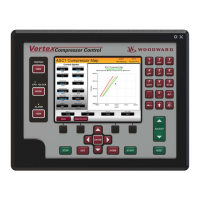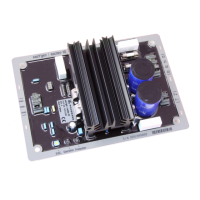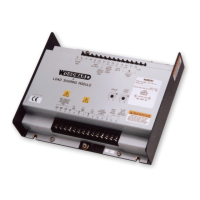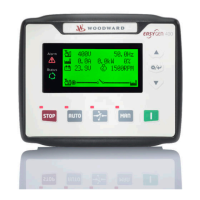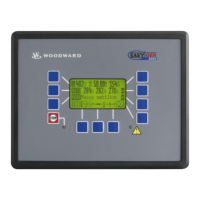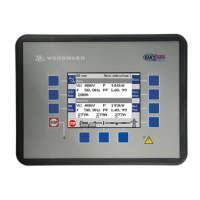Manual 37128A GCP-20 Series - Genset Control
Page 80/190 © Woodward
Parameter 35
Freq.controller
ramp 00Hz/s
f controller: set point ramp 2 to 50 Hz/s
The different set point values are supplied to the controller via this ramp. The slope
of the ramp is used to alter the rate at which the controller modifies the set point
value. The faster the change in the set point is to be carried out, the greater the
value entered here must be.
Parameter 36
Freq.controller
dead band 0.00Hz
f controller: dead band 0.02 to 1.00 Hz
Isolated operation The generator set point frequency is controlled in such a man-
ner that, in its adjusted state, the current value deviates from the gen-
erator set point frequency by this configured
dead band at most.
Synchronization The generator frequency is controlled in such a manner that, in
its adjusted state, the differential frequency reaches the
dead band at
most. The mains or busbar frequency are used as the set point value.
Parameter 37
Freq.controller
Time pulse>000ms
f controller: minimum frequency 10 to 250 ms
This parameter is the minimum ON time for the relays to be able to respond in a re-
liable manner to the raise/lower signals. The shortest possible time must be set here
to ensure optimum control behavior.
Parameter 38
Freq.controller
Gain Kp 00.0
f controller: gain 0.1 to 99.9
The gain factor K
p
influences the operating time of the relays. By increasing the
number in this parameter, the operating time can be increased in the event of a cer-
tain control deviation.
Parameter 39
Freq.controller
gain Kpr 000
Option QF only
f controller:P gain 1 to 240
The proportional coefficient specifies the gain. By increasing the gain, the response
is increased to permit larger corrections to the variable to be controlled. The farther
out of tolerance the process is the larger the response action is to return the process
to the tolerance band. If the gain is configured too high, the result is excessive
overshoot/undershoot of the desired value.
Parameter 40
Freq.controller
reset Tn 00.0s
Option QF only
f controller: Reset time 0.0 to 60.0 s
The reset time T
n
identifies the I part of the PID controller. The reset time corrects
for any offset (between set point and process variable) automatically over time by
shifting the proportioning band. Reset automatically changes the output require-
ments until the process variable and the set point are the same. This parameter per-
mits the user to adjust how quickly the reset attempts to correct for any offset. The
reset time constant must be greater than the derivative time constant. If the reset
time constant is too small, the engine will continually oscillate. If the reset time
constant is too large, the engine will take to long to settle at a steady state.
Parameter 41
Freq.controller
derivat.Tv 0.00s
Option QF only
f controller: Derivative-action time 0.00 to 6.00 s
The derivative-action time T
V
identifies the D part of the PID controller. By in-
creasing this parameter, the stability of the system is increased. The controller will
attempt to slow down the action of the actuator in an attempt to prevent excessive
overshoot or undershoot. Essentially this is the brake for the process. This portion
of the PID loop operates anywhere within the range of the process unlike reset.
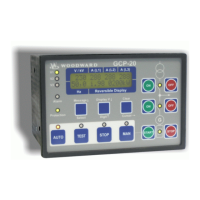
